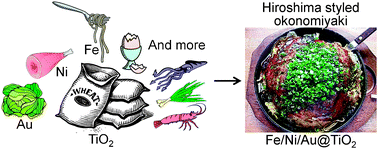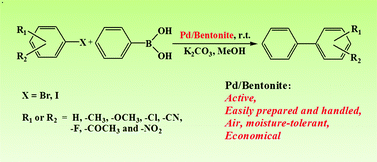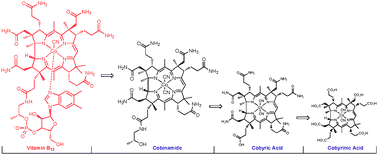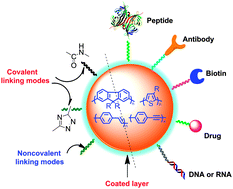
http://www.chemistryviews.org/details/ezine/5392681/Amide_Hydrogenation_in_Flow_Reactor.html
Amide Hydrogenation in Flow Reactor (wiley)
Amines are produced by amide hydrogenation over a bimetallic platinum–rhenium catalyst in a high-throughput vertical flow reactor
]]>DOI: 10.1039/C3GC41469H, Paper
The Pd/bentonite catalyst prepared by a simple impregnation method in water is very active and stable for the Suzuki-Miyaura reaction.

Zeolites modified with aminoalkoxysilanes and cyclodextrin show different uptake and release properties depending on which silane is used
Multifunctional nanocontainers for imaging, targeting, and drug release are a main research area in bio-nanomedicine. Jurriaan Huskens and colleagues, University of Twente, The Netherlands, have functionalized nanoporous zeolite L crystals with β-cyclodextrin (CD) to give multifunctional systems that have the potential for encapsulation of drug molecules inside the zeolite pores and noncovalent attachment of other, for example, targeting, ligand molecules on its surface.
]]>
TiO2 ternary-modified with Fe3+, Ni2+, and Au nanoparticles exhibited a noticeable photocatalytic activity for selective cyclohexane oxidation with O2 under sunlight irradiation.
Ternary modified TiO2 as a simple and efficient photocatalyst for green organic synthesis
E-mail: IDE.Yusuke@nims.go.jp ;
Fax: +81-29-860-4826
DOI: 10.1039/C3CC41174E
Received 13 Feb 2013, Accepted 15 Mar 2013
First published online 15 Mar 2013
]]>

Cu(II)-catalyzed decarboxylative acylation of acyl C–H of formamides with  -oxocarboxylic acids leading to
-oxocarboxylic acids leading to  -ketoamides
-ketoamides
| Dengke Li,a Min Wang,*a Jie Liu,a Qiong Zhaoa and Lei Wang*ab |
| Chem. Commun., 2013, 49(35), 3640-3642 |
| http://pubs.rsc.org/en/content/articlelanding/2013/cc/c3cc41188eDOI: 10.1039/C3CC41188E |

E-mail: leiwang@chnu.edu.cn ;
Fax: +86-561-309-0518 ;
Tel: +86-561-380-2069

DOI: 10.1039/C3CS60062A, Tutorial Review
E-mail: dorota.gryko@icho.edu.pl
Lord Alexander B. Todd wrote: “Vitamin B12turned out to be a substance of frightening complexity“. This review focuses on the chemistry of this complex molecule and its derivatives giving the researcher an introduction to the field of this fascinating molecule.
Vitamin B12: chemical modifications
Vitamin B12 plays a key role in many metabolic processes occurring in all mammals. Over the years its biological role has been extensively studied generating a lot of interest in the chemistry of this vital molecule. This established a variety of new methodologies for the synthesis and analysis of new cobalamin derivatives as well as creative purification techniques. This tutorial review summarizes all the advancements made in this area, providing a deeper insight into vitamin B12 chemistry.

-
amcrasto@gmail.com
…………
 The cuboctahedron consists of copper paddle-wheel nodes and carborane–isophthalic acids
The cuboctahedron consists of copper paddle-wheel nodes and carborane–isophthalic acids
Scientists in the US have made a molecular species containing the highest number of boron atoms ever recorded in a crystallographically characterised molecular species. The unique supramolecular cuboctahedron contains 240 boron atoms and was synthesised by Chad Mirkin and colleagues at Northwestern University in Evanston, Illinois, via coordination-driven assembly.
http://www.rsc.org/chemistryworld/2013/07/nanostructure-highest-number-boron-atoms
]]>



